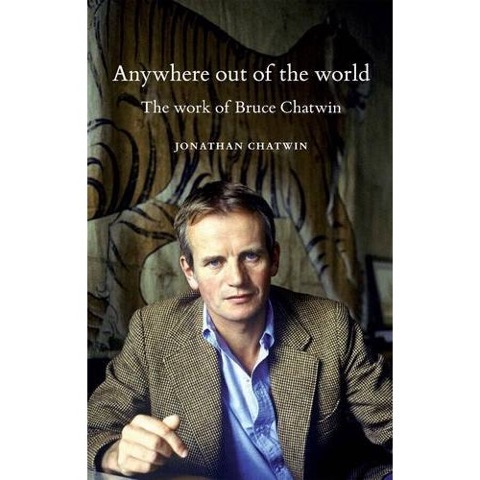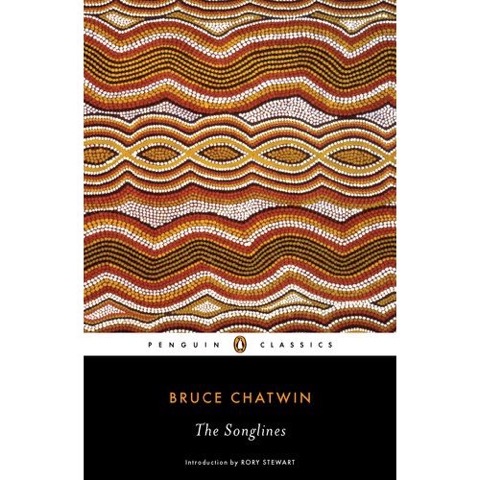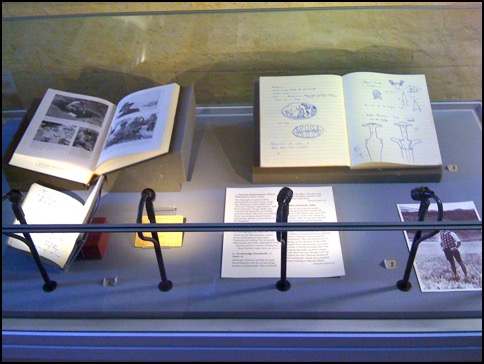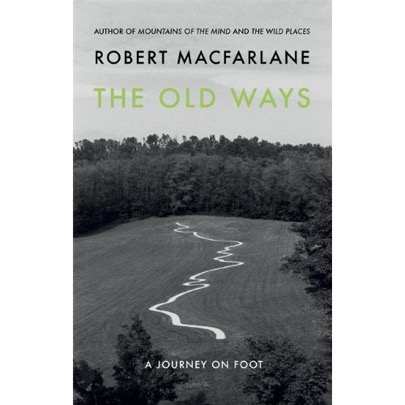Self-Promotion PT2
03/12/12 09:09
The book, 'Anywhere out of the world: The work of Bruce Chatwin', is now out and available at all the usual online sellers, including Amazon.
It's initially in hardback (aimed at the academic market), but will be released in the future as a (more affordable) paperback.
It's initially in hardback (aimed at the academic market), but will be released in the future as a (more affordable) paperback.
Comments
Off the beaten track
02/12/12 09:14
A recent BBC feature addresses the perpetual question addressed at travel writing: does it matter if it's true or not?
"Many bestselling and award-winning travel writers have turned out to be distinctly unreliable narrators. Should we file their books under fact - or fiction? And do readers really care?
Made-up characters, placing themselves in the thick of it when they were not actually there, embroidering reality - these are just some of the charges that have been made against writers including Patrick Leigh Fermor, Norman Lewis, and Bruce Chatwin since their deaths."
There are no surprises, but it nonetheless goes to show that – more than thirty years after In Patagonia – no real consensus has been reached over what the incumbent responsibilities are of those who write of travel.
"Many bestselling and award-winning travel writers have turned out to be distinctly unreliable narrators. Should we file their books under fact - or fiction? And do readers really care?
Made-up characters, placing themselves in the thick of it when they were not actually there, embroidering reality - these are just some of the charges that have been made against writers including Patrick Leigh Fermor, Norman Lewis, and Bruce Chatwin since their deaths."
There are no surprises, but it nonetheless goes to show that – more than thirty years after In Patagonia – no real consensus has been reached over what the incumbent responsibilities are of those who write of travel.
PLF
14/10/12 08:56
A couple of recent articles relating to Patrick Leigh Fermor, both of which mention Bruce and his famous resting place in the hills above Kardamyli, near Leigh Fermor's home.
Kevin Rushby goes travelling in search of them both in the Guardian.
Meanwhile, the Wall Street Journal goes more in-depth, looking back in detail at Leigh Fermor's life. (There's also a nice slideshow, with interior and exterior shots of his beautiful house, now bequeathed to the Benaki Museum).
Kevin Rushby goes travelling in search of them both in the Guardian.
Meanwhile, the Wall Street Journal goes more in-depth, looking back in detail at Leigh Fermor's life. (There's also a nice slideshow, with interior and exterior shots of his beautiful house, now bequeathed to the Benaki Museum).
Self-promotion
03/10/12 03:43
Apologies for the blatant self-promotion, but my book on Chatwin, titled 'Anywhere Out of the World: The Work of Bruce Chatwin', is about to be published by Manchester University Press. It's coming out in hardback initially; more info can be found here.

On a different note, it's recently come to my attention that there's a good Facebook source of news on Chatwin titled Bruce Chatwin's Notebook; do go and check it out. Of course, it's also possible to keep up to date via the brucechatwin.co.uk Twitter feed at twitter.com/chatwinnews (or you can simply search for the handle @chatwinnews).
'The Songlines': A Penguin Classic
27/06/12 04:06
It's heartwarming to see that Penguin have decided to issue The Songlines as a Penguin Classic; the novel joins Chatwin's other key work, In Patagonia, in being awarded that honour. The introduction for the edition is by Rory Stewart, and an abbreviated version of his essay is now online at The New York Review of Books. Stewart writes of the coherence of Chatwin's vision of the world:
'In his facts and in his fiction (he once observed that he didn’t think there was a distinction), the world is intricate but not opaque. Everything, from Aboriginal myths to childhood memories and adult encounters, is fixed, placed, and overdetermined. The connections between his darting brief images may be omitted, but they are not ambiguous, and the reader can only draw one conclusion from his parables.'
At present – and this is true of the Penguin In Patagonia – this edition of the The Songlines is a Penguin U.S. publication, which seems both surprising and disappointing given Chatwin's nationality.
'In his facts and in his fiction (he once observed that he didn’t think there was a distinction), the world is intricate but not opaque. Everything, from Aboriginal myths to childhood memories and adult encounters, is fixed, placed, and overdetermined. The connections between his darting brief images may be omitted, but they are not ambiguous, and the reader can only draw one conclusion from his parables.'
At present – and this is true of the Penguin In Patagonia – this edition of the The Songlines is a Penguin U.S. publication, which seems both surprising and disappointing given Chatwin's nationality.

'It's marketing, not science.'
25/06/12 03:48
The company behind Moleskine notebooks – the original, unbranded versions of which were a perennial favourite of Chatwin's – is to float on the Italian stock exchange. Despite being touted as the notebooks of choice for Picasso, Chatwin and Hemingway, the modern moleskine is really a marketing construct – the company behind them took a generic notebook design, increased the production values and wove a romantic narrative around the result. And, frankly, all power to them, for, at the end of the day, they are still really rather fine notebooks and deserve their success – though I do tend to think that the company owes the Chatwin estate a debt of gratitude.
More on the floatation from Reuters here.
More on the floatation from Reuters here.

Notebooks and other items from Bruce Chatwin's archive on display at the Bodleian Library, Oxford.
'In Patagonia': Robert Macfarlane's Book of a Lifetime
25/06/12 03:34
Robert Macfarlane chooses BC's In Patagonia as his 'Book of a Lifetime' over at The Independent. As always, he offers a clear-headed perspective on Chatwin's work:
'What I learnt above all from Chatwin is that travel writing – unpropelled by any narrative except the journey itself – must find alternative momentums. He taught me that pattern can substitute powerfully for plot: that apparently unconnected details and images, sprinkled as iron filings through a book, might be magnetised into subtle arrangement.'
Macfarlane's new book – partly inspired by Chatwin, and receiving rave reviews – is The Old Ways: A Journey on Foot.
'What I learnt above all from Chatwin is that travel writing – unpropelled by any narrative except the journey itself – must find alternative momentums. He taught me that pattern can substitute powerfully for plot: that apparently unconnected details and images, sprinkled as iron filings through a book, might be magnetised into subtle arrangement.'
Macfarlane's new book – partly inspired by Chatwin, and receiving rave reviews – is The Old Ways: A Journey on Foot.
'The worst thing is choice'
03/05/12 01:08
Architect John Pawson – who designed the interior of Bruce Chatwin's flat at Eaton Place – is profiled in the Wall Street Journal. For those unfamiliar with the story behind Chatwin's tiny apartment, Pawson covers the design in more detail here, pointing out once more the disparity between Bruce's desired minimalism and the reality of his personality:
'He wanted to travel light. But of course in his apartment he had a lot of things.'
'He wanted to travel light. But of course in his apartment he had a lot of things.'
Baronessa Beatrice Monti della Corte
09/04/12 06:49
Baronessa Beatrice Monti della Corte, who will be known to those familiar with Chatwin's life as the wife (now widow) of the novelist Gregor von Rezzori, is profiled in Bloomberg Business Week, of all places, where she talks of her writer's retreat, Santa Maddalena, which was inspired by Bruce Chatwin's visits:
'Bruce Chatwin gave me the idea, without either of us really realizing it. He used to visit Santa Maddalena to write.
When my husband died, I realized I still wanted my house to be a place where writers like Bruce could come and work. For the first year I invited my friends, simply because it was the easiest thing to do. And it grew from there.'
Amongst other prominent writers, she has hosted celebrated figures such as Orhan Pamuk, Michael Cunningham, Edmund White, and Zadie Smith.
'Bruce Chatwin gave me the idea, without either of us really realizing it. He used to visit Santa Maddalena to write.
When my husband died, I realized I still wanted my house to be a place where writers like Bruce could come and work. For the first year I invited my friends, simply because it was the easiest thing to do. And it grew from there.'
Amongst other prominent writers, she has hosted celebrated figures such as Orhan Pamuk, Michael Cunningham, Edmund White, and Zadie Smith.
La Legge dell'odio
23/03/12 02:11

My Italian isn't what it should be, but it appears that journalist Alberto Garlini has written a long novel which features a central protagonist based on Chatwin. The finer details escape me, but Garlini said of the book: "I wanted to write a novel about Bruce Chatwin with a cameo of a fascist, and I wrote a novel about a Fascist with a cameo of Chatwin."
You can buy the Kindle edition here and read more of the interview with Garlini here. I'd be interested to hear from anyone who has more details on the novel: please do get in touch.
Peter Whitfield: 'Travel: A Literary History'
16/03/12 23:06
Over at the NYTimes arts blog, Peter Whitfield discusses his new broad history of travel literature, which 'ranges from the travel stories of the Bible and the ancient Greeks to 20th-century wanderers like Patrick Leigh Fermor and Bruce Chatwin':
'It’s often said that since we can all travel anywhere, what’s the point of travel writing? But I think that in a world where so much is phony, we need to find the genuine, and this is what the travel writer is for now: to show us what’s under the surface; to warn us what tourism does to us and to the places we visit.'
Find more here.

'It’s often said that since we can all travel anywhere, what’s the point of travel writing? But I think that in a world where so much is phony, we need to find the genuine, and this is what the travel writer is for now: to show us what’s under the surface; to warn us what tourism does to us and to the places we visit.'
Find more here.

In the footsteps….
09/03/12 04:57
Great to see that both parts of Nicholas Shakespeare's documentary In the Footsteps of Bruce Chatwin are now available on YouTube:
Bruce Chatwin 'saved' travel writing
08/03/12 01:53
This managed to pass me by; Robert Macfarlane (one of the great modern travel writers, in my opinion) writing in Harper's on the 'restless genius of Patrick Leigh Fermor and Bruce Chatwin'. Chatwin, he argues:
Saved travel writing by changing its mandate: After Chatwin, the challenge was to find not originality of destination but originality of form.
Among those who have followed Chatwin, the most interesting have forged new forms specific to their chosen subjects: thus Pico Iyer’s sparkily hyperconnective studies of globalized culture and William Least Heat-Moon’s “deep maps” of America’s lost regions. Perhaps most important were W.G. Sebald’s enigmatic “prose fictions”—particularly “Rings Of Saturn”—that likewise hover between genres, make play with unreliability, and fold in on other forms: traveler’s tale, antiquarian digression, and memoir. What Sebald, like so many of us, learned from Chatwin was that the travelogue could voyage deeply in time rather than widely in space, and that the interior it explored need not be the heart of a place but the mind of the traveler.
You can find the full article – behind a firewall – here.
Hat-tip: worldhum.com
Macfarlane's new book The Old Ways – partially inspired by Chatwin – is out in June.

Saved travel writing by changing its mandate: After Chatwin, the challenge was to find not originality of destination but originality of form.
Among those who have followed Chatwin, the most interesting have forged new forms specific to their chosen subjects: thus Pico Iyer’s sparkily hyperconnective studies of globalized culture and William Least Heat-Moon’s “deep maps” of America’s lost regions. Perhaps most important were W.G. Sebald’s enigmatic “prose fictions”—particularly “Rings Of Saturn”—that likewise hover between genres, make play with unreliability, and fold in on other forms: traveler’s tale, antiquarian digression, and memoir. What Sebald, like so many of us, learned from Chatwin was that the travelogue could voyage deeply in time rather than widely in space, and that the interior it explored need not be the heart of a place but the mind of the traveler.
You can find the full article – behind a firewall – here.
Hat-tip: worldhum.com
Macfarlane's new book The Old Ways – partially inspired by Chatwin – is out in June.

Patagonia
02/03/12 03:53
Photographer Jorge Uzon shot some stunning, intimate photographs of Patagonia, now viewable over the New York Times website. Uzon's modus operandi is strikingly similar to that of Bruce Chatwin during his visit to the country:
'It was always about the people. I never spent days waiting for the right light by a lake. It was never my idea to shoot pretty sunsets. My idea was to shoot the people in relation to the landscape.'
'It was always about the people. I never spent days waiting for the right light by a lake. It was never my idea to shoot pretty sunsets. My idea was to shoot the people in relation to the landscape.'
A Card from Angela Carter
28/02/12 03:20
Great interview with Susannah Clapp, Chatwin's friend, editor and memoirist at the Telegraph; talking of her new book 'A Card from Angela Carter', she references Bruce and a postcard joke at his expense:
'A very unlikely card, in a way, for Angela to send, is the Maori creation myth card. It’s not the kind of thing you’d expect her to be interested in. Her interest in mythology and fairy tale and the landscape of the unconscious was very different to that sort of overarching myth. She was much more drawn to individual mythologies, to Kleinian and Freudian explanations, and to fairy tales, which have a more precise and personal narrative.
I have a feeling that there’s a sort of half-joke at Bruce Chatwin’s expense in that choice of card. Angela would have known that some of the more extravagant claims that Bruce was making in The Songlines, about the origins of the unconscious, were not, perhaps, absolutely anthropologically accurate.'
The book is also well worth a read.
'A very unlikely card, in a way, for Angela to send, is the Maori creation myth card. It’s not the kind of thing you’d expect her to be interested in. Her interest in mythology and fairy tale and the landscape of the unconscious was very different to that sort of overarching myth. She was much more drawn to individual mythologies, to Kleinian and Freudian explanations, and to fairy tales, which have a more precise and personal narrative.
I have a feeling that there’s a sort of half-joke at Bruce Chatwin’s expense in that choice of card. Angela would have known that some of the more extravagant claims that Bruce was making in The Songlines, about the origins of the unconscious, were not, perhaps, absolutely anthropologically accurate.'
The book is also well worth a read.